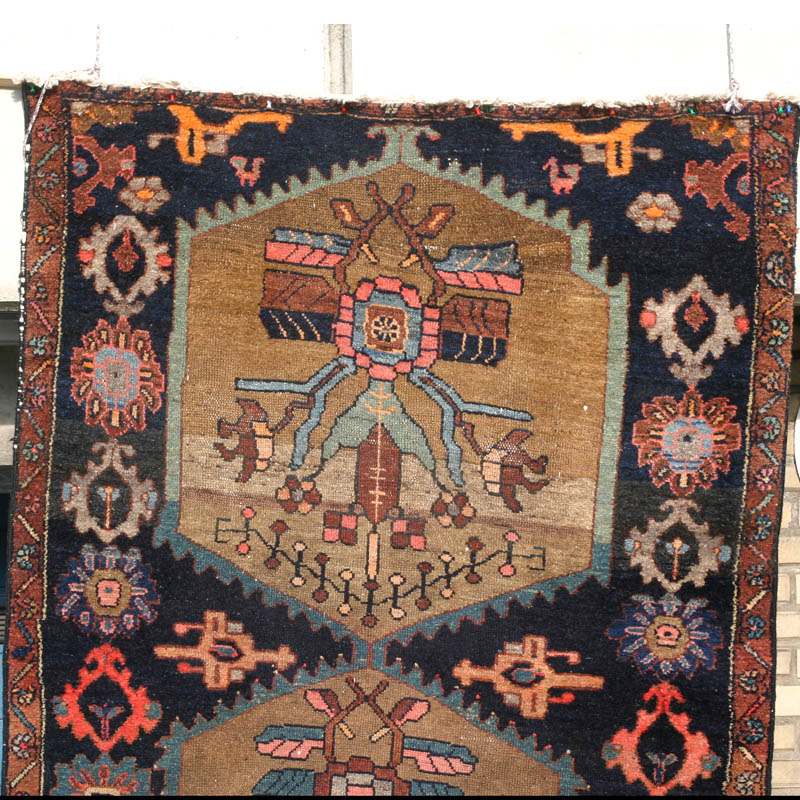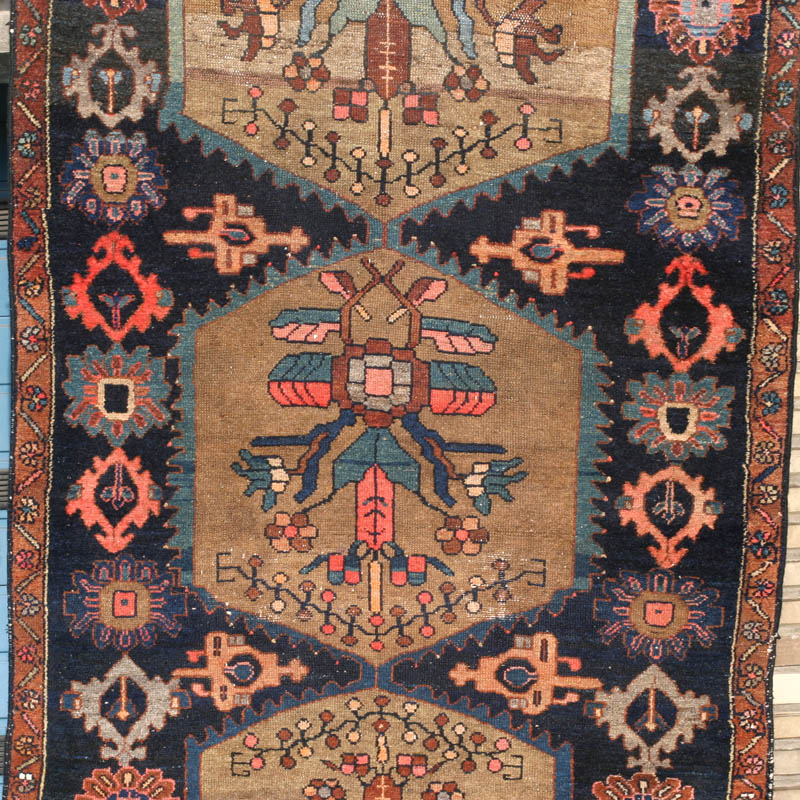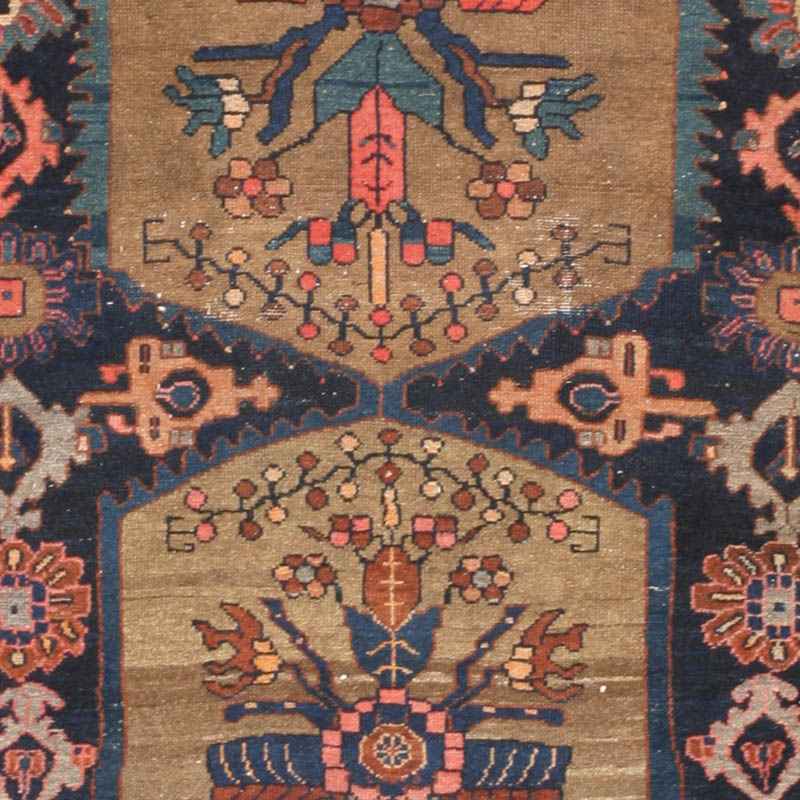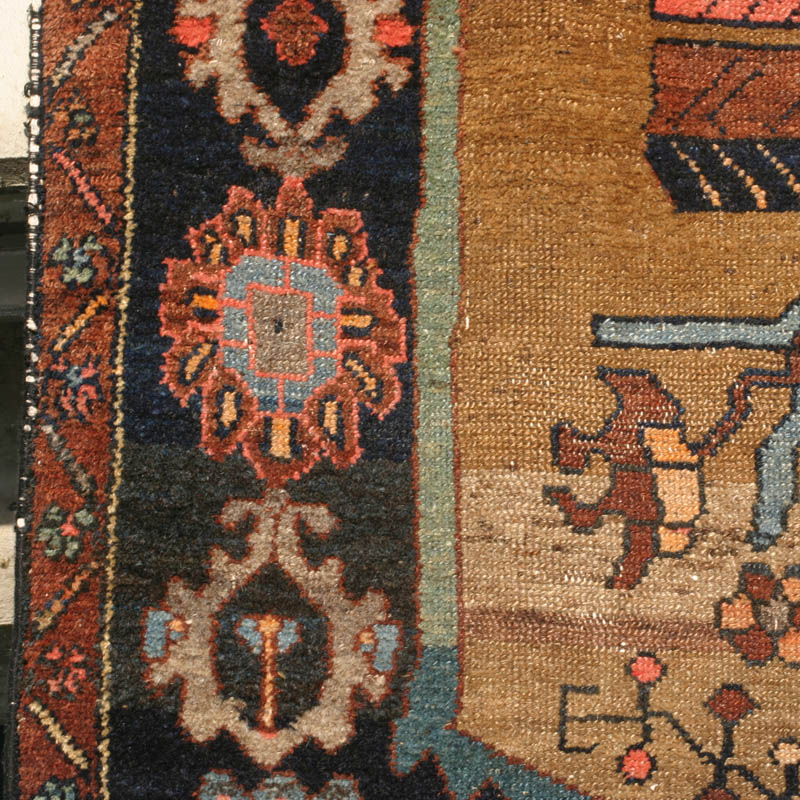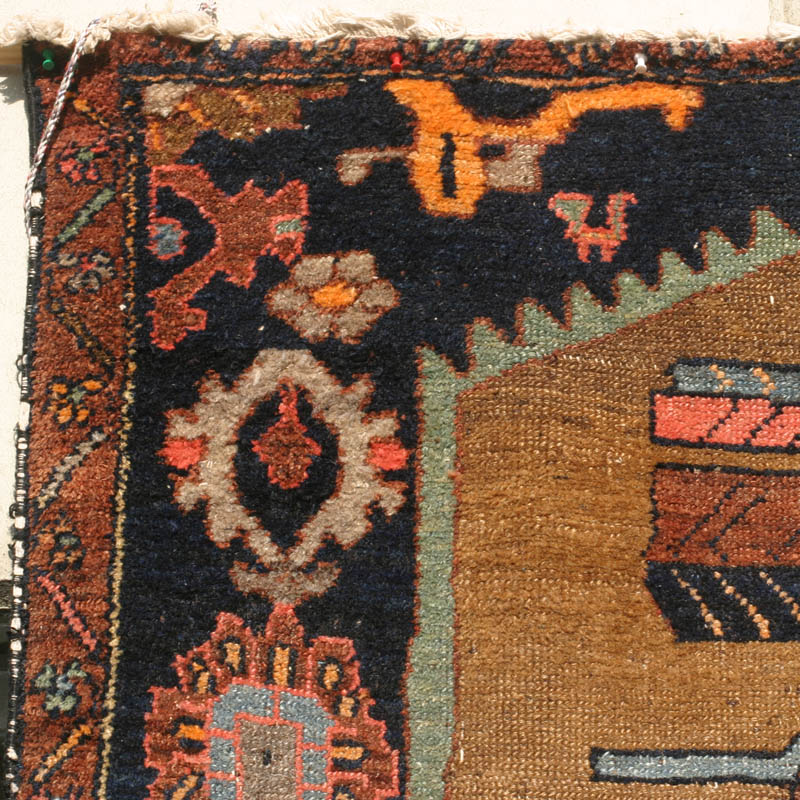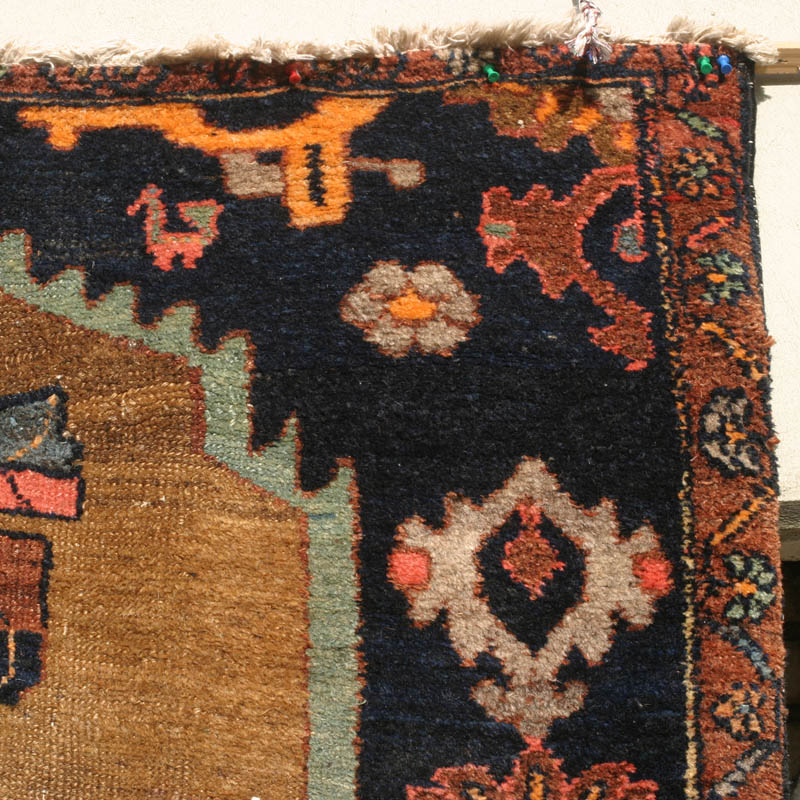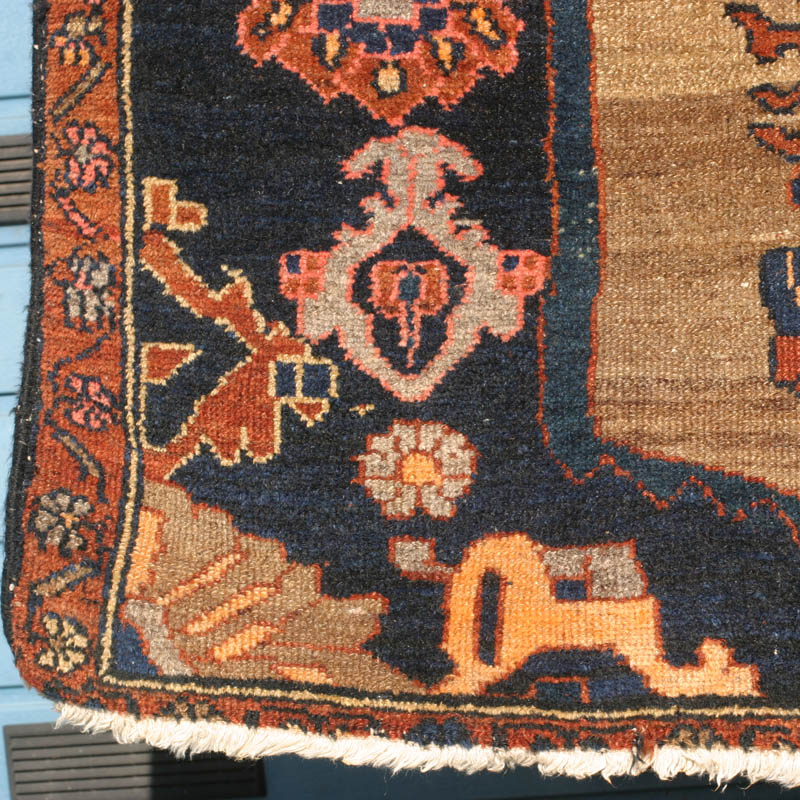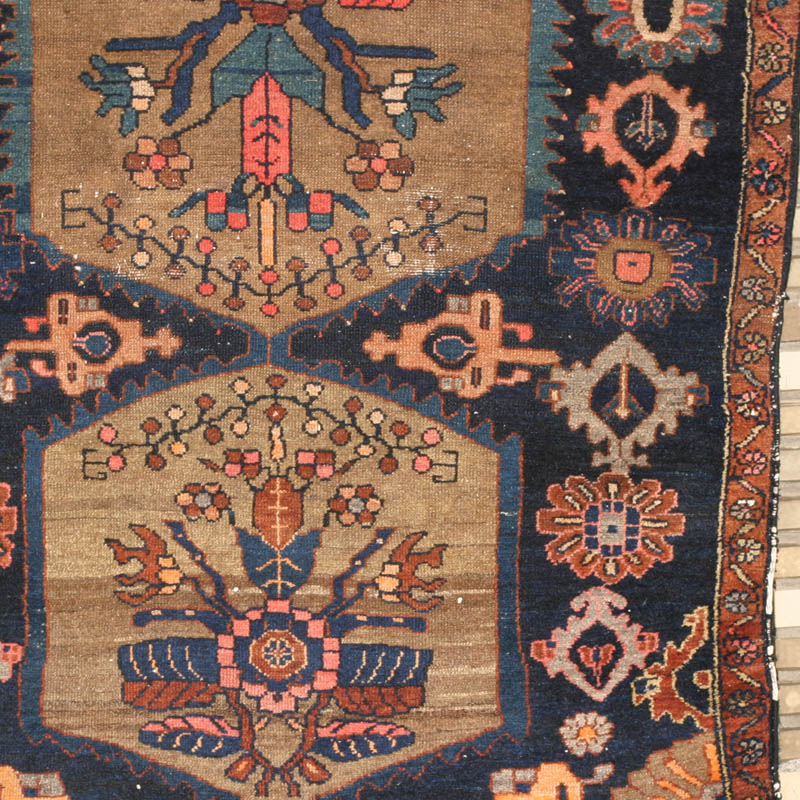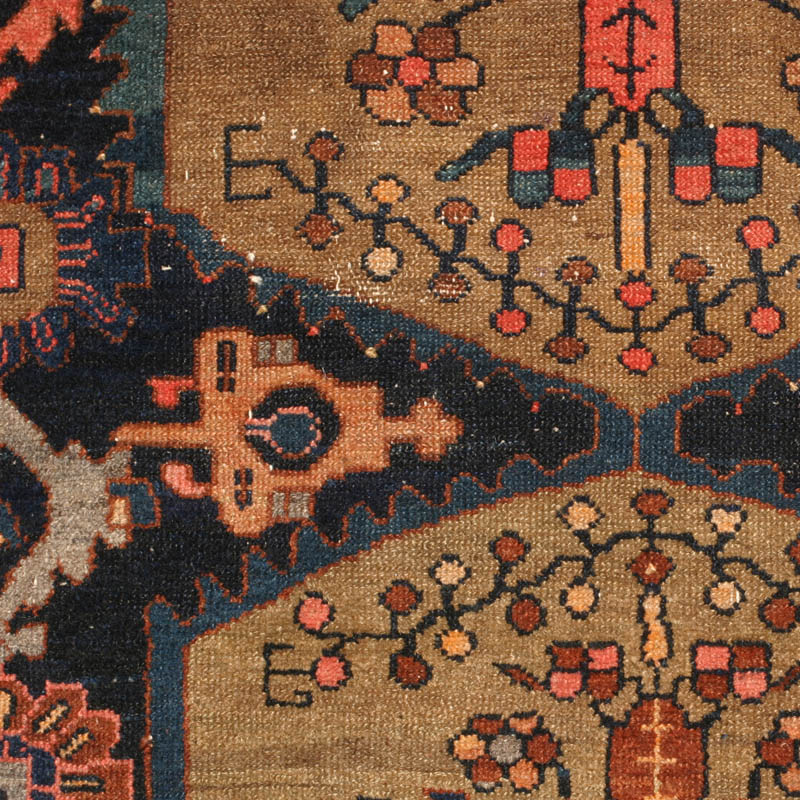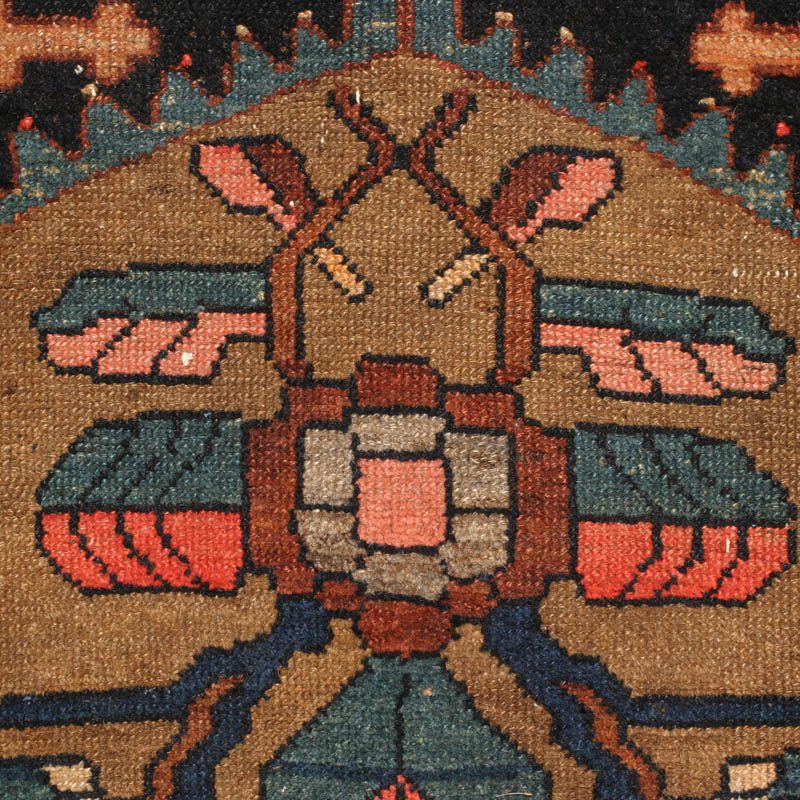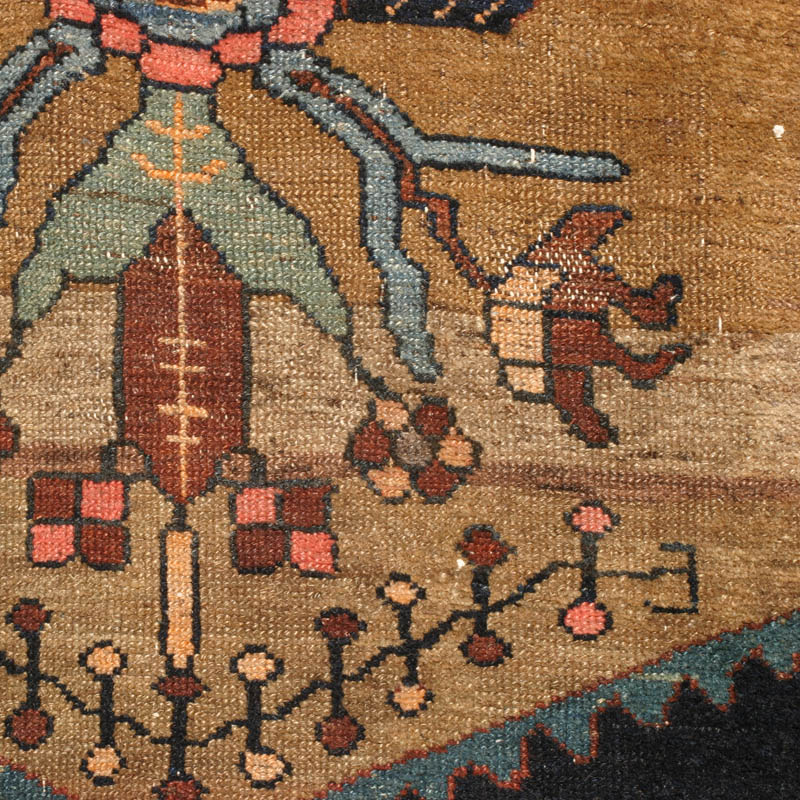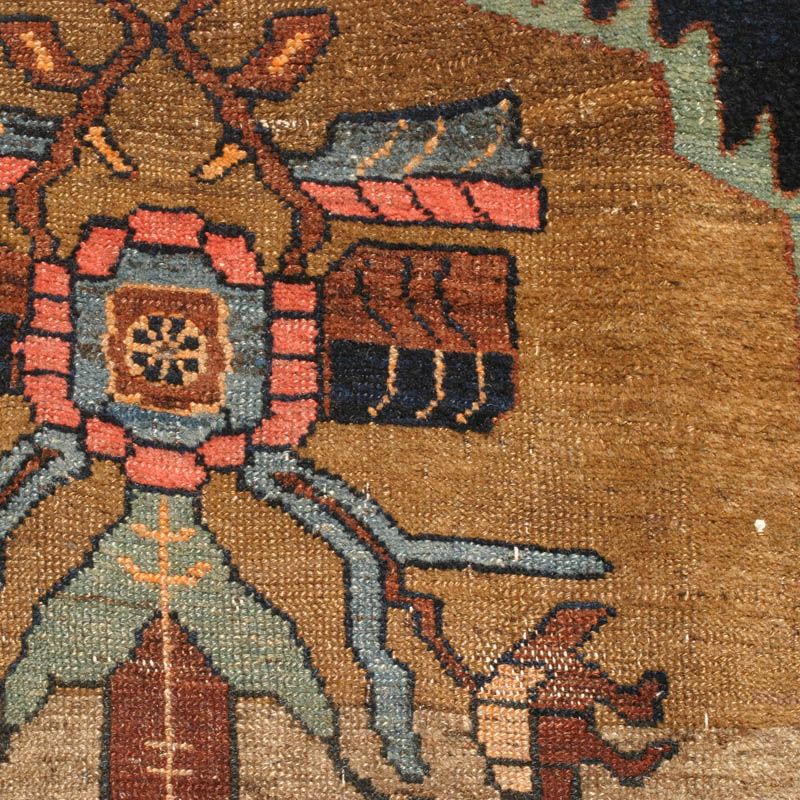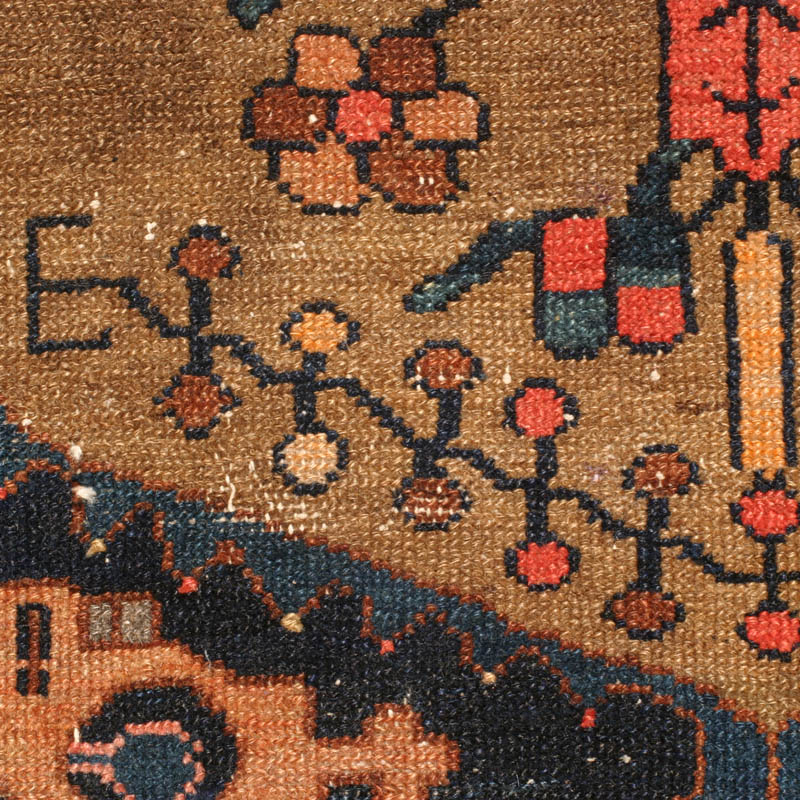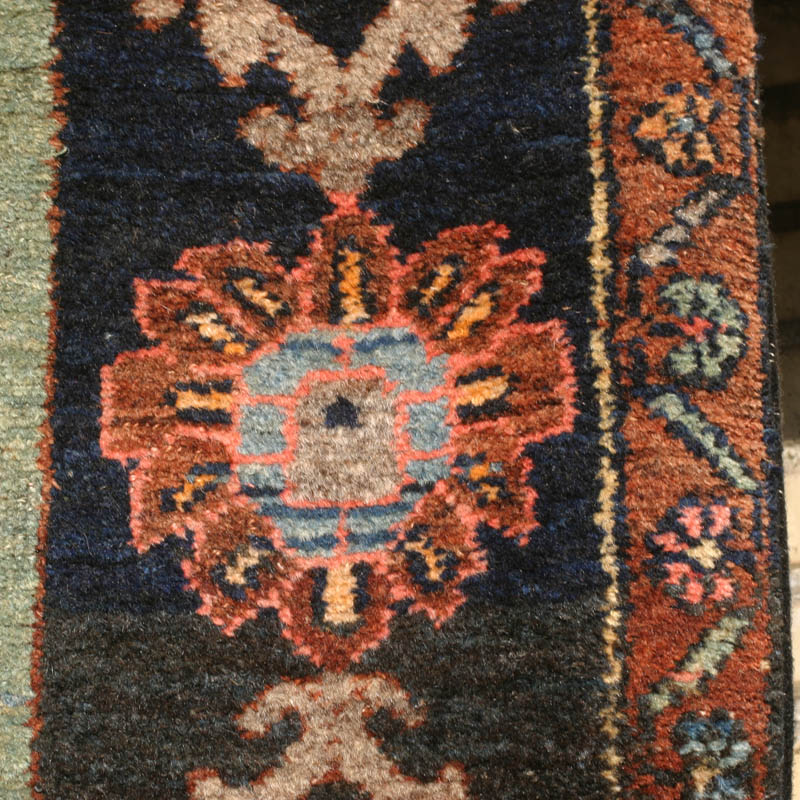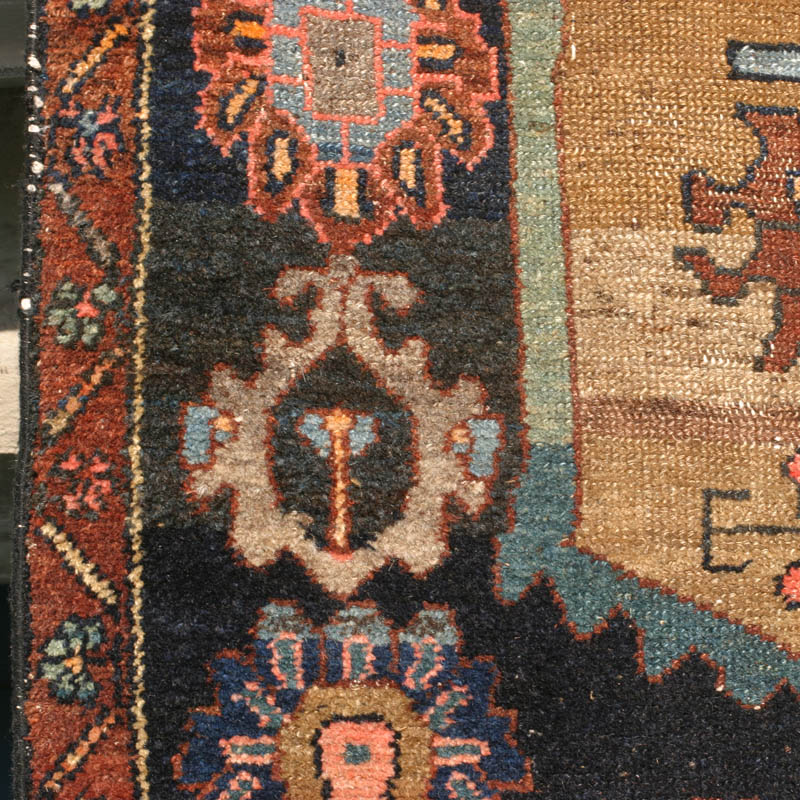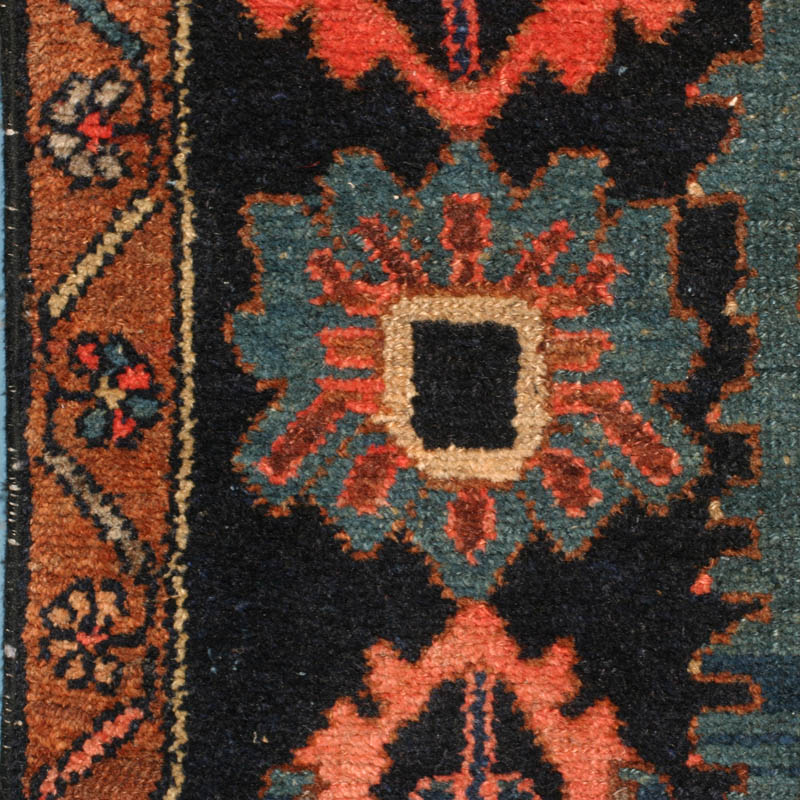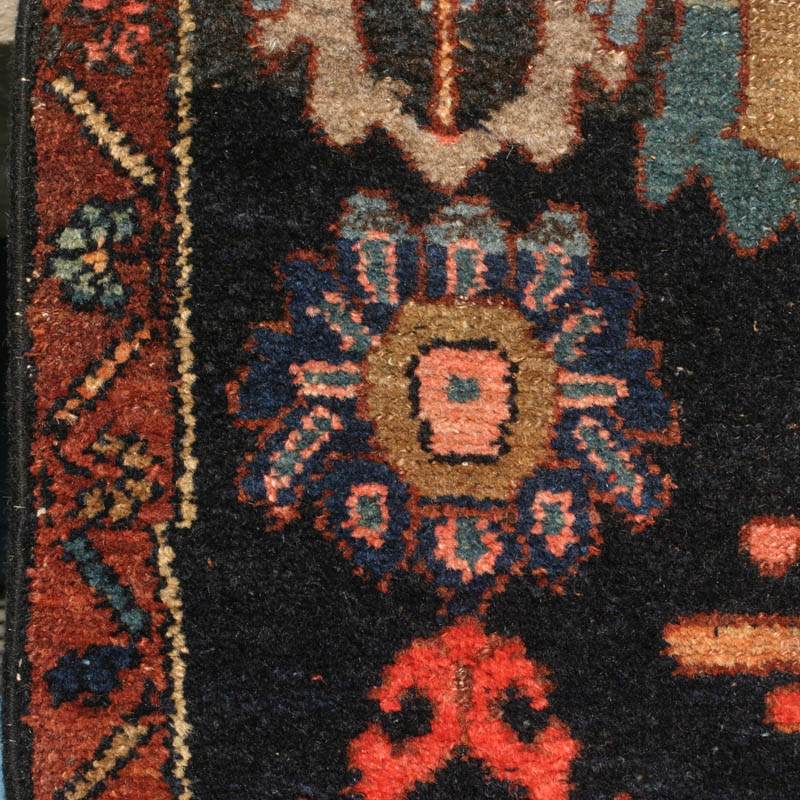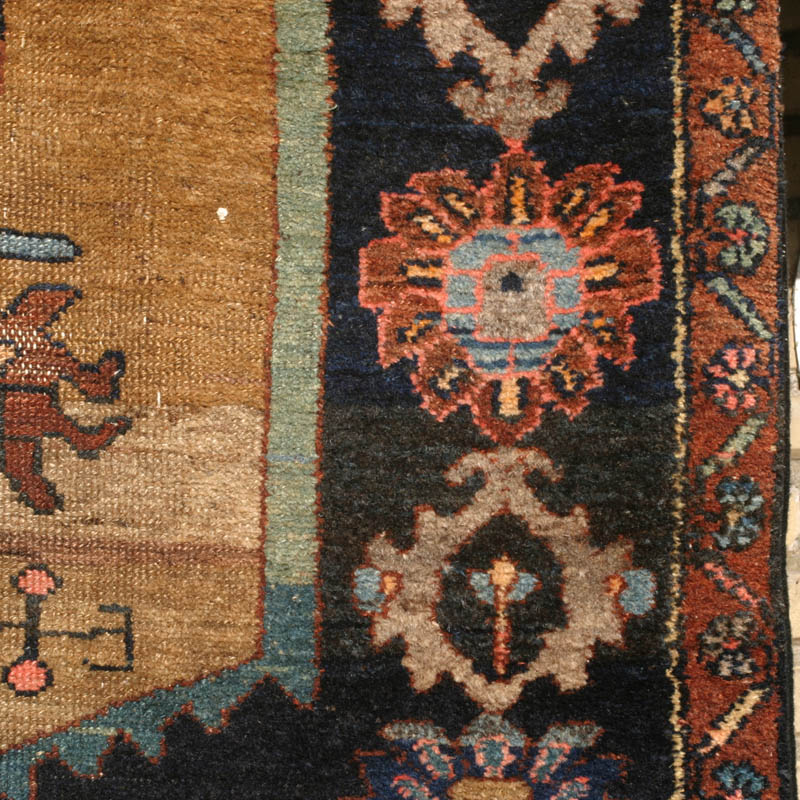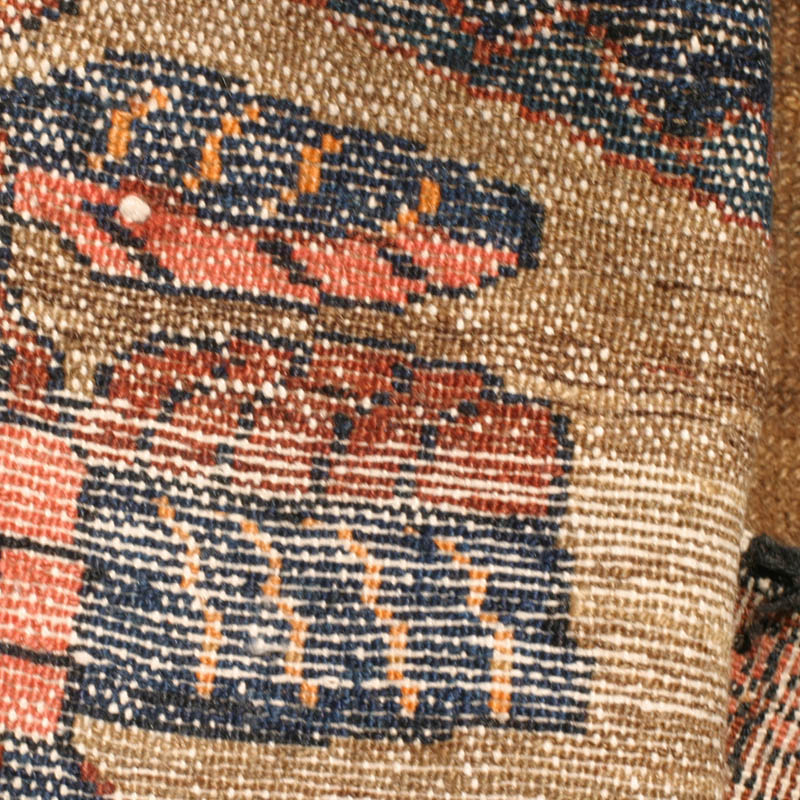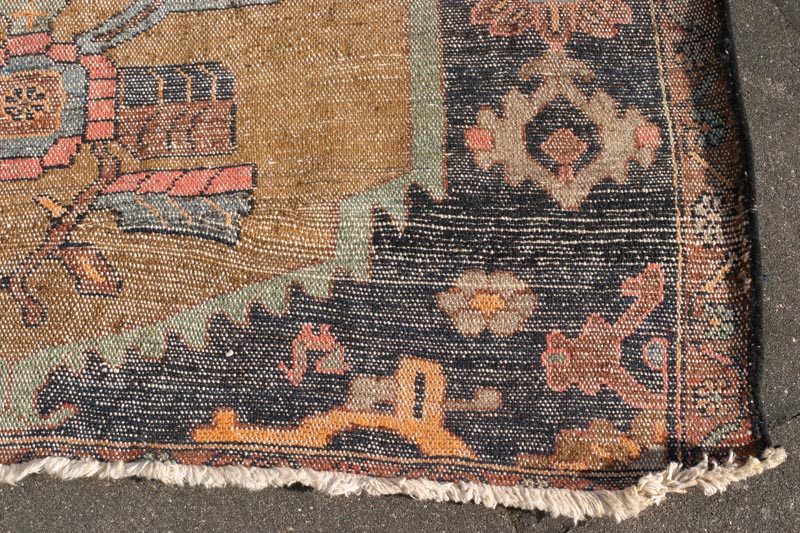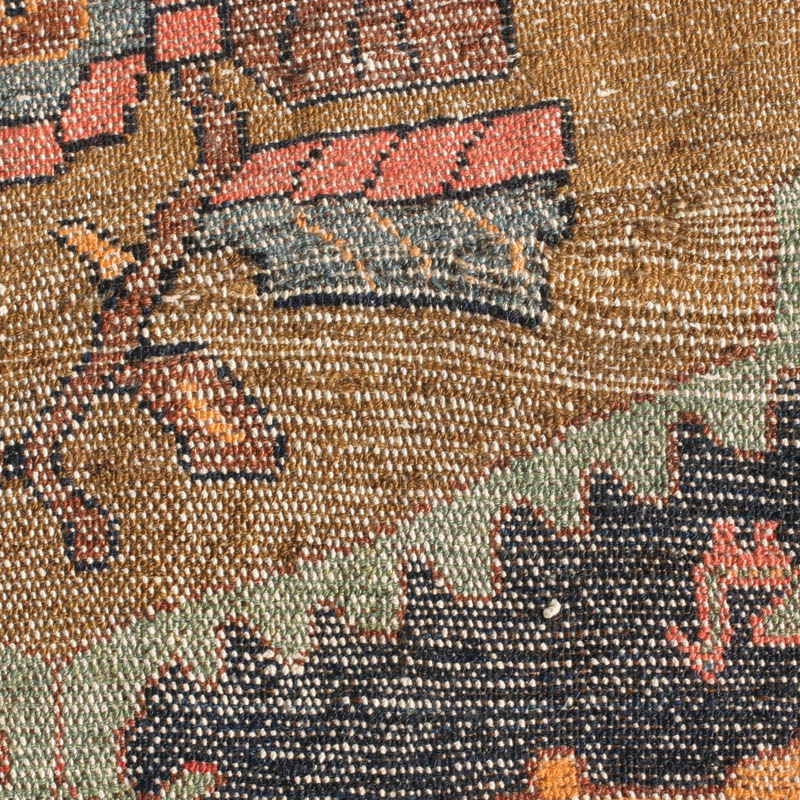Click on image to view at large size. Click here to see image in extra large size.
Now this rug is for sale on Ebay
The design of this Kurdish rug is very unusual, especially in the way the large elements which we would normally encounter as main border elements are flanking the medallions unrestrained, surrounded by just one border. The design seems to sit outside the commercial Hamadan production; the irregular shape, the simple single border with a kurdish rosette meander, the free treatment of the vase desgin in the three medallions (the top two upside down, if you take the direction of weaving), the brown wool wefts and the irregularities in the execution could indicate a nomadic origin. I would guess the age to be 1900-1930 c. The serrated frame around the medallions shows nice abrash from blues to greens. Note the 'spaceship' elements (squashed palmettes?) in the triangular spaces between the medallions.
I fail to attribute this rug beyond saying 'kurdish' and possibly 'nomadic' Hamadan using relevant sources I have (which for Hamadans is essentially Willborg's book 'Hamadan' and the Hamadan section of Edwards' 'The Persian Carpet'); structurally it is close to Willborg's No. 6 Nomadic Hamadan, which also has cotton warps and wool wefts and a similar, slightly finer knot count and v/h ratio (v.32/10 x h.32/10).
The rug measures ca. 231 x 127 cm (7ft.7in. x 4ft.2in.). Cotton warps, single wefts (mostly wool, some cotton) as usual, no warp depression. The weaving is quite coarse, the horizontal knot count is h.27/10, the vertical knot count is v.26/10, which means roughly 702 knots/dm2 (or, converted to to inches, h.6.5,v.6.5 = ca. 42 kpsi). Toward the top right side, the weaver has inserted additional wefts to influence the shape of the rug, which at some point showed a slant downwards towards the right side. Perhaps mother was working next to daughter who compacted the rug less? Or this is an effect of dismantling a horizontal loom and having problems with warp tension when setting it up elsewhere? I simply don't know. The result, at least, is a rug that lies flat on the floor and is more or less rectangular. Fat one cord selvedges wrapped in black wool. No kilim ends remain.
Half of top and bottom border missing, ends well secured. Some selvage wrapping is missing, the repair I may undertake myself. Some foundation showing in a few places of the field. Pile is short in the centre, longer towards the border. I have hand-washed the rug with a neutral detergent, it is now clean.
A very pleasing and nicely abrashed palette dominated by the night-blue abrashed indigo ground and the abrashed camel medallions, with accents of bright colours in the bold vase designs and the rosette and palmette shapes surrounding the medallions. Some of these bright dyes are probably synthetic (the light red), some certainly synthetic (the orange). In spite of the existence of synthetic dyes (which are said to have been greatly cherished by tribal weavers when they became available to them) the overall colouring is very successful, in my opinion.
